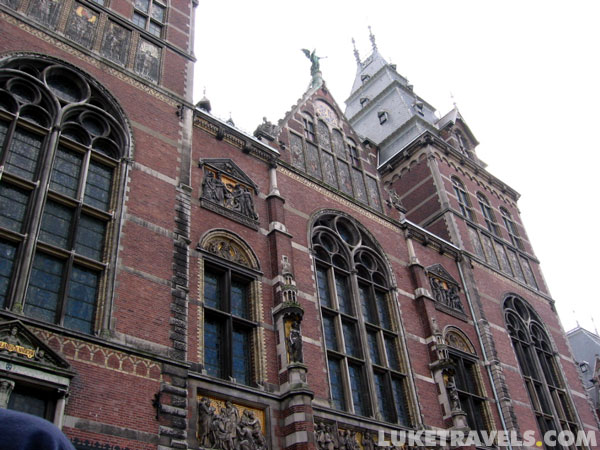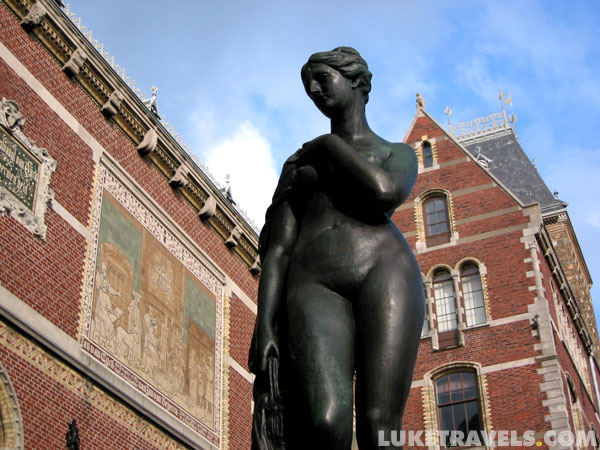
 |
 |
 |
 |
 |
 |
 |
 |
 |
| |
|
|
| |
Residential area in Amsterdam. Amsterdam, Holland. Copyright ©
LukeTravels.comô |
|
| |
|
|
 |
 |
 |
 |
 |
 |
 |
 |
 |
| |
|
|
| |
The
Rijksmuseum building detail. When the Rijksmuseum was opened to the public for the first time in 1800 as the Nationale Konstgallerij (National Art Gallery), it was housed in the Huis ten Bosch in The Hague and the collection consisted primarily of paintings. In 1808 it moved to Amsterdam, where it was to be seen first in the Palace on Dam Square and later in the Trippenhuis on
Kloveniersburgwal. The present building came into use in 1885. At that point the Nederlandsch Museum voor Geschiedenis en Kunst (Netherlands Museum for History and Art), formerly in The Hague, was added to the Rijksmuseum, forming the basis for the collections of Dutch History and Sculpture and Applied Art.
Amsterdam, Holland. Photo Copyright © LukeTravels.comô |
|
| |
|
|
  

|





